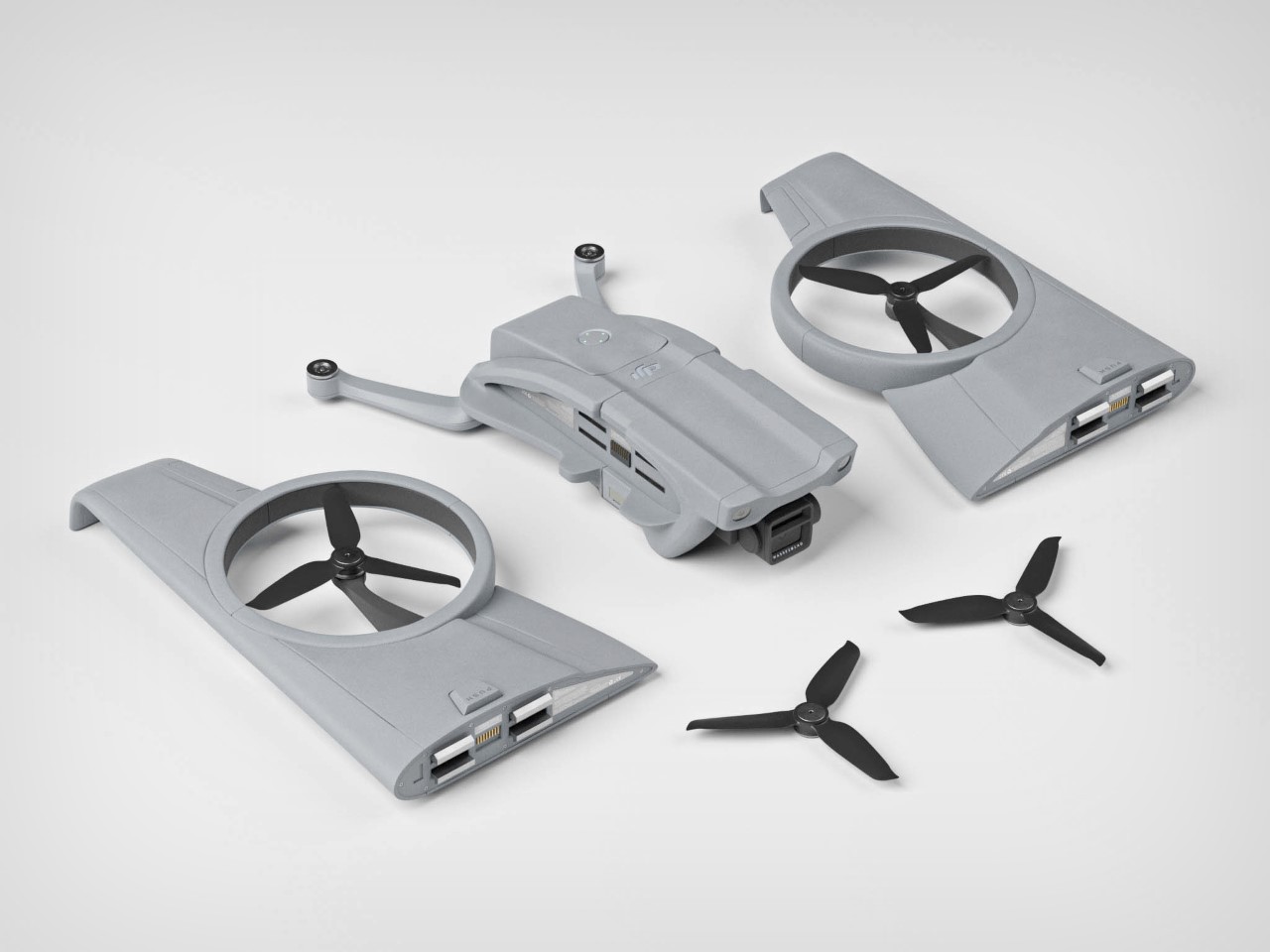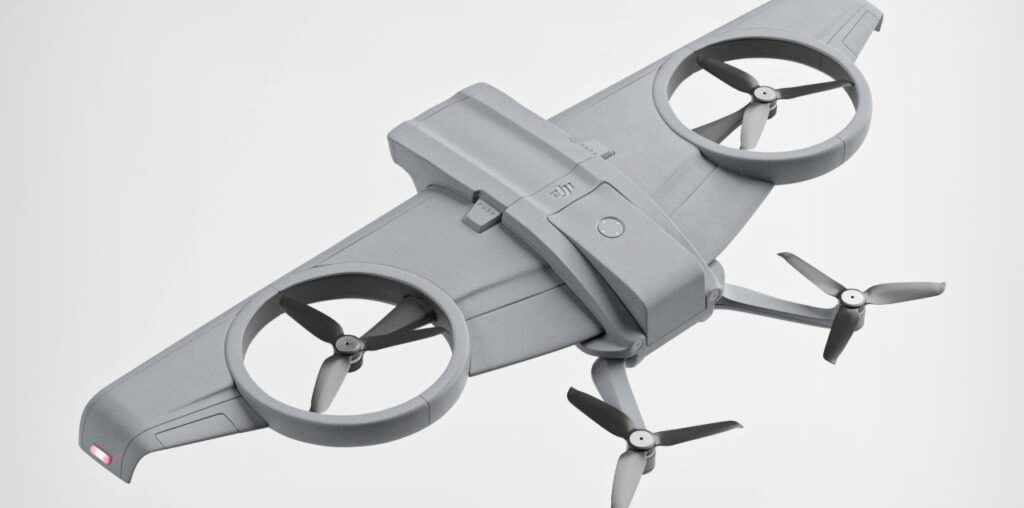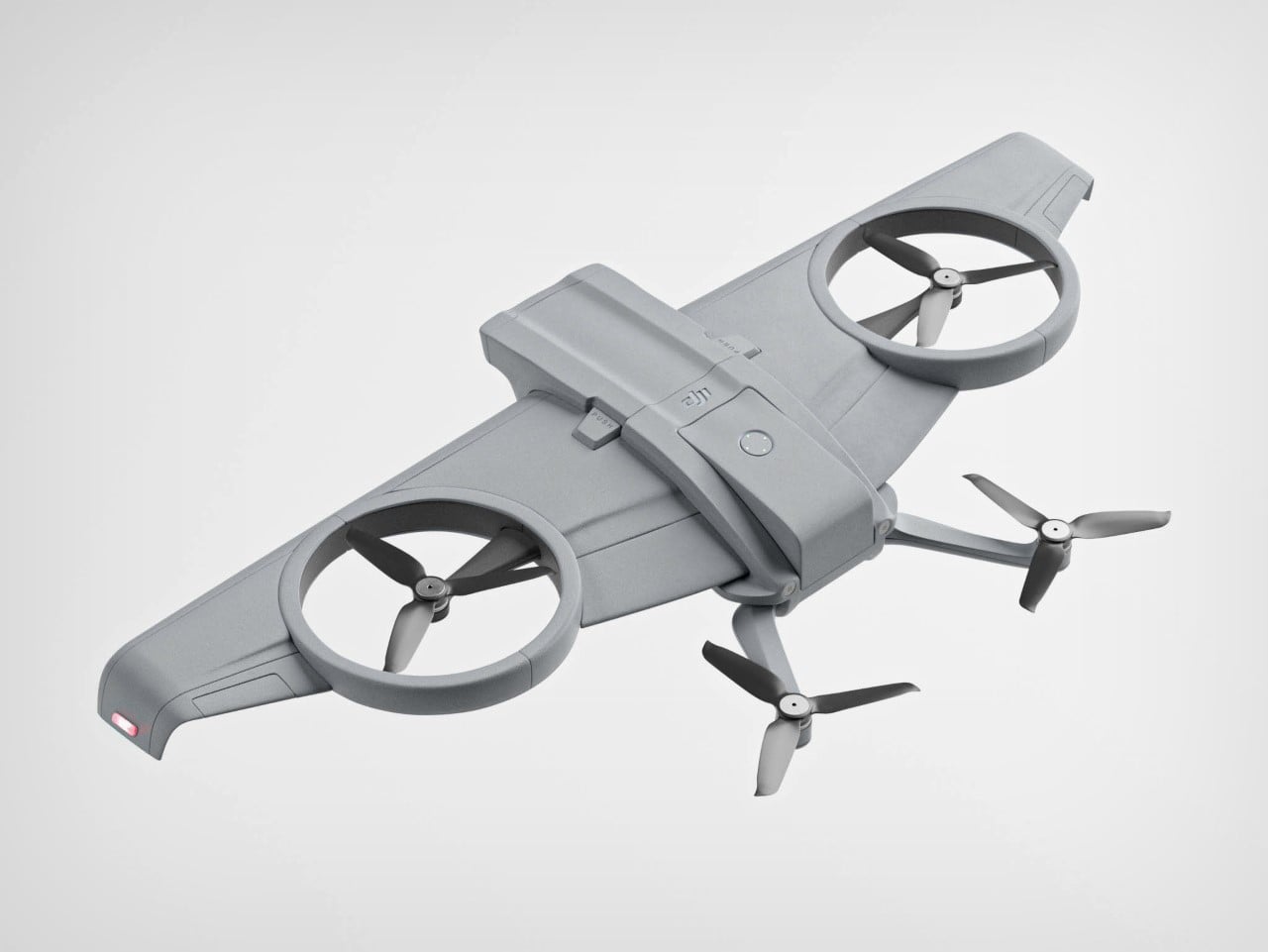
You’ve seen quadcopters, and you’ve seen drones used for crop dusting or aerial surveillance – the DJI Glide is a fusion of both those drones. Designed by Baptiste Grenon, the DJI Glide proposes a battery-efficient design courtesy the presence of wings that help the drone stay stable and achieve flight at high altitudes without being an energy-guzzler. The drone still has the familiar quadcopter format, but also includes wings, giving it a hybrid design that might just translate to a longer battery and better range.
Designer: Baptiste Grenon
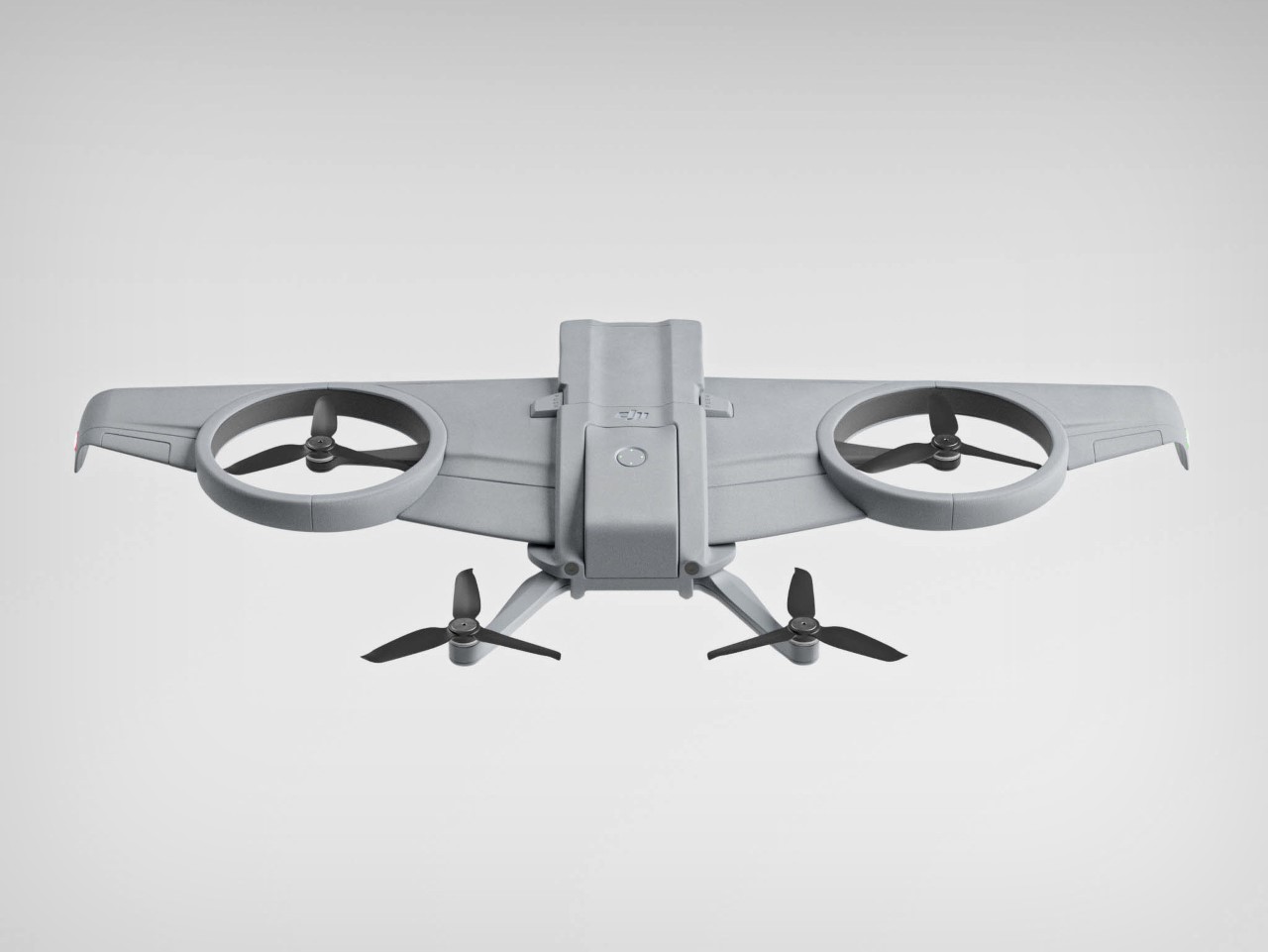

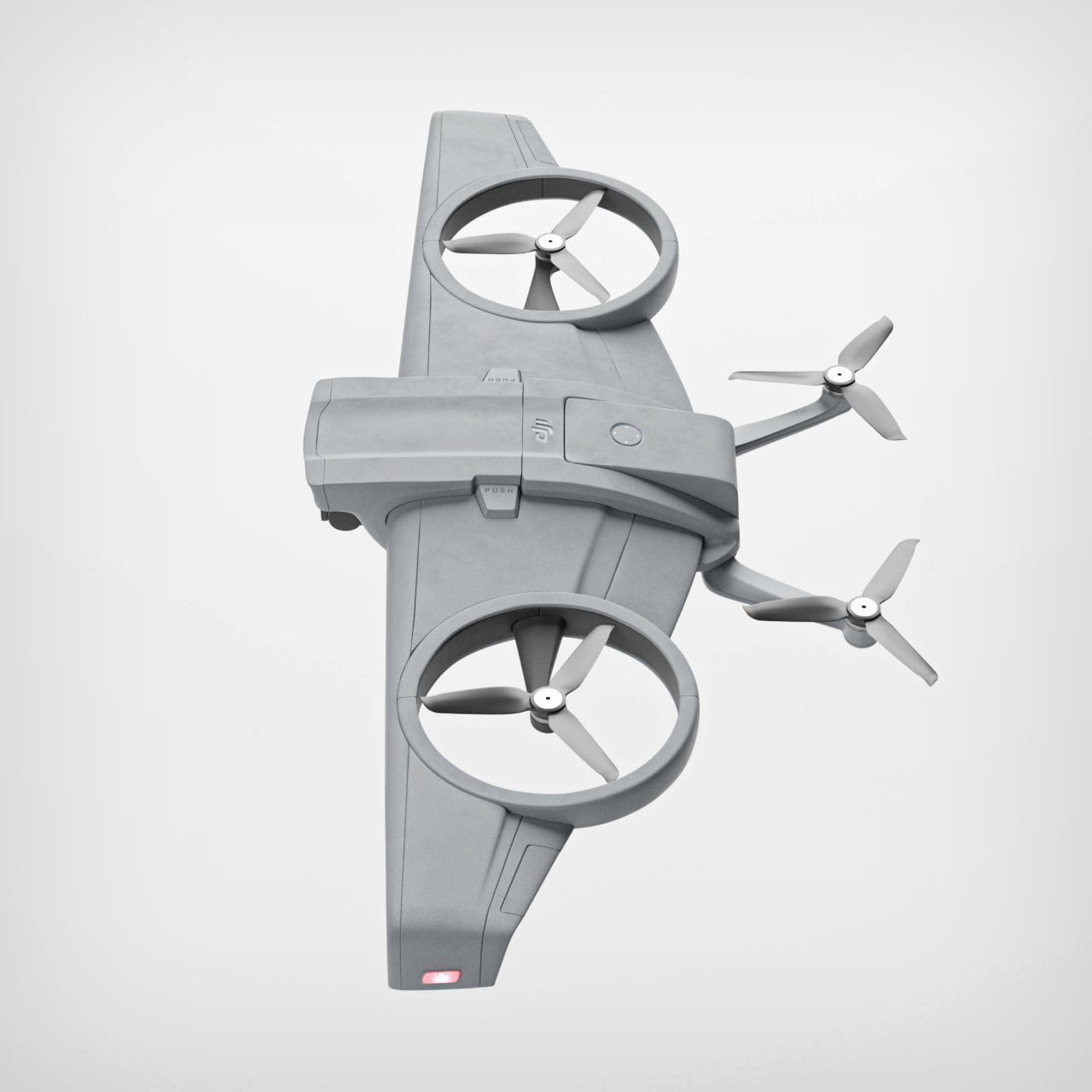

The DJI Glide’s unique design includes two standard propellers, and two propellers built right into the drone’s wings, which double as propeller guards during flight. It doesn’t look like the wings themselves move, although Grenon has included what looks like rudders at the wing-tips for better maneuverability. The drone still has vertical take-off and landing, but the airfoil cross-section of the wings gives it much more aerodynamics while the drone hurtles forward at top speed.
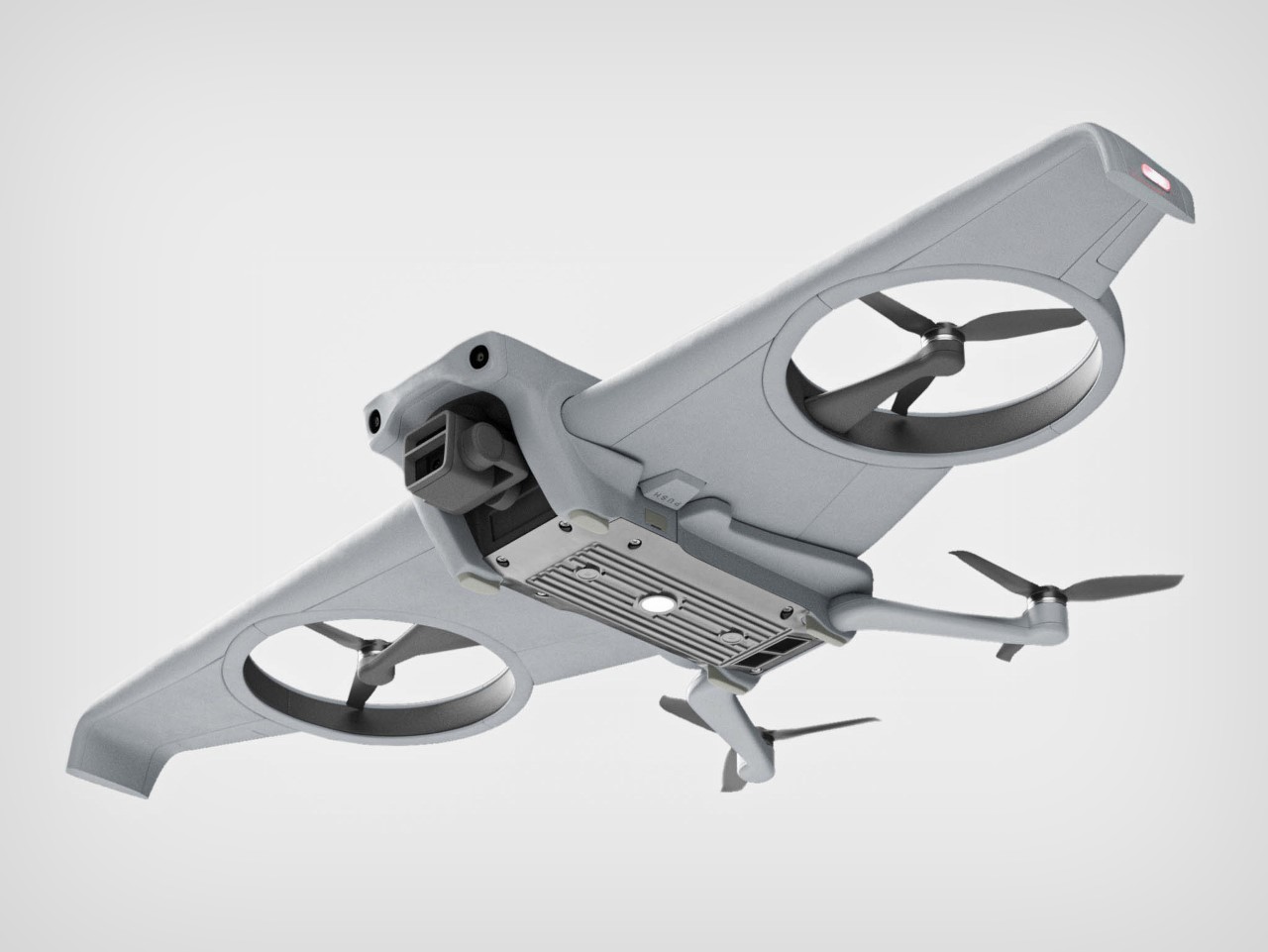



The implication therefore is that the DJI Glide is more suited for FPV flying as opposed to cinematic flight. A gimbal-mounted Hasselblad camera on the front records your PoV, while cameras on the front, back, and bottom give the drone spatial awareness, allowing it to maneuver on its own without colliding into objects – perfect for having the drone return back to base after its battery runs out.
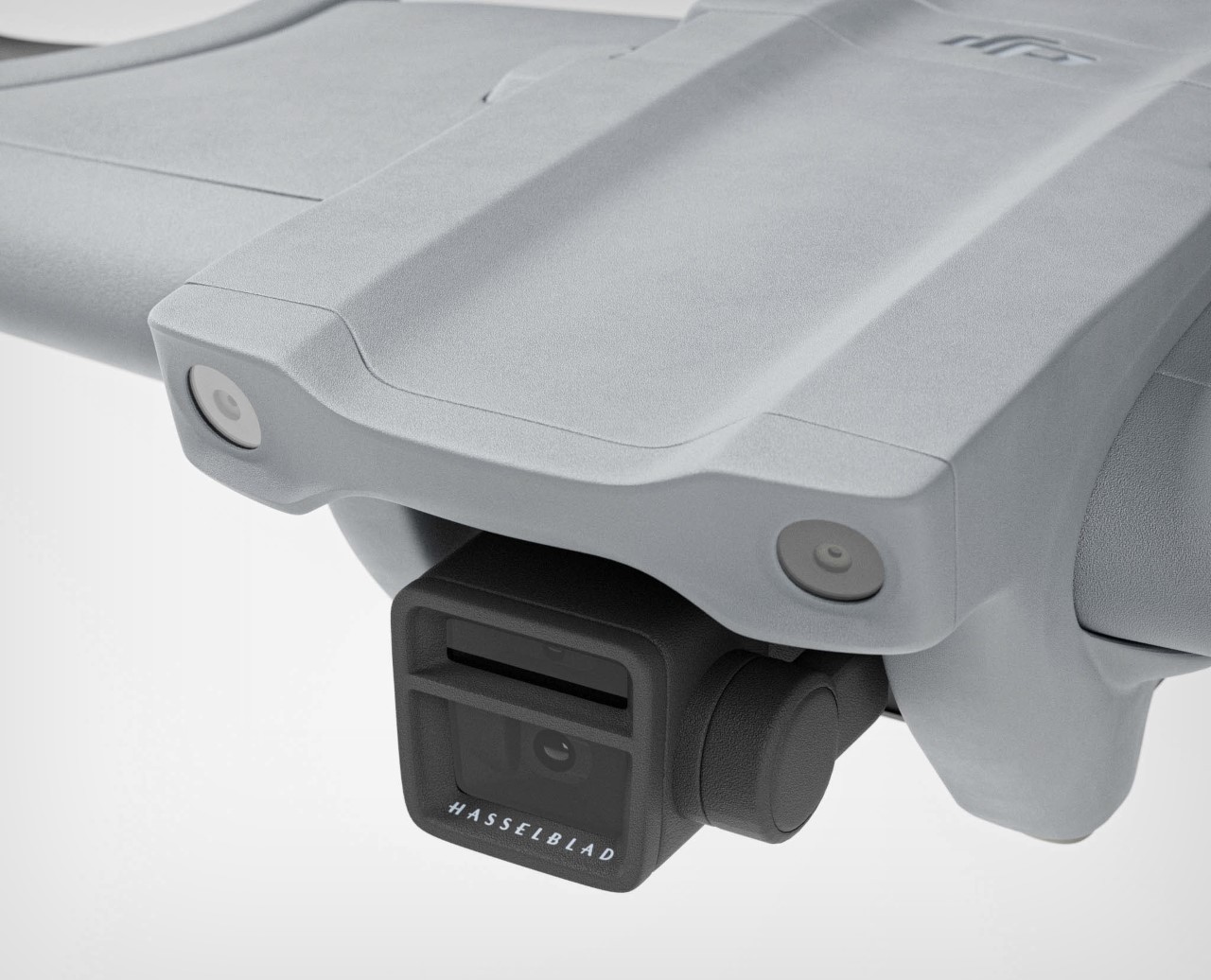

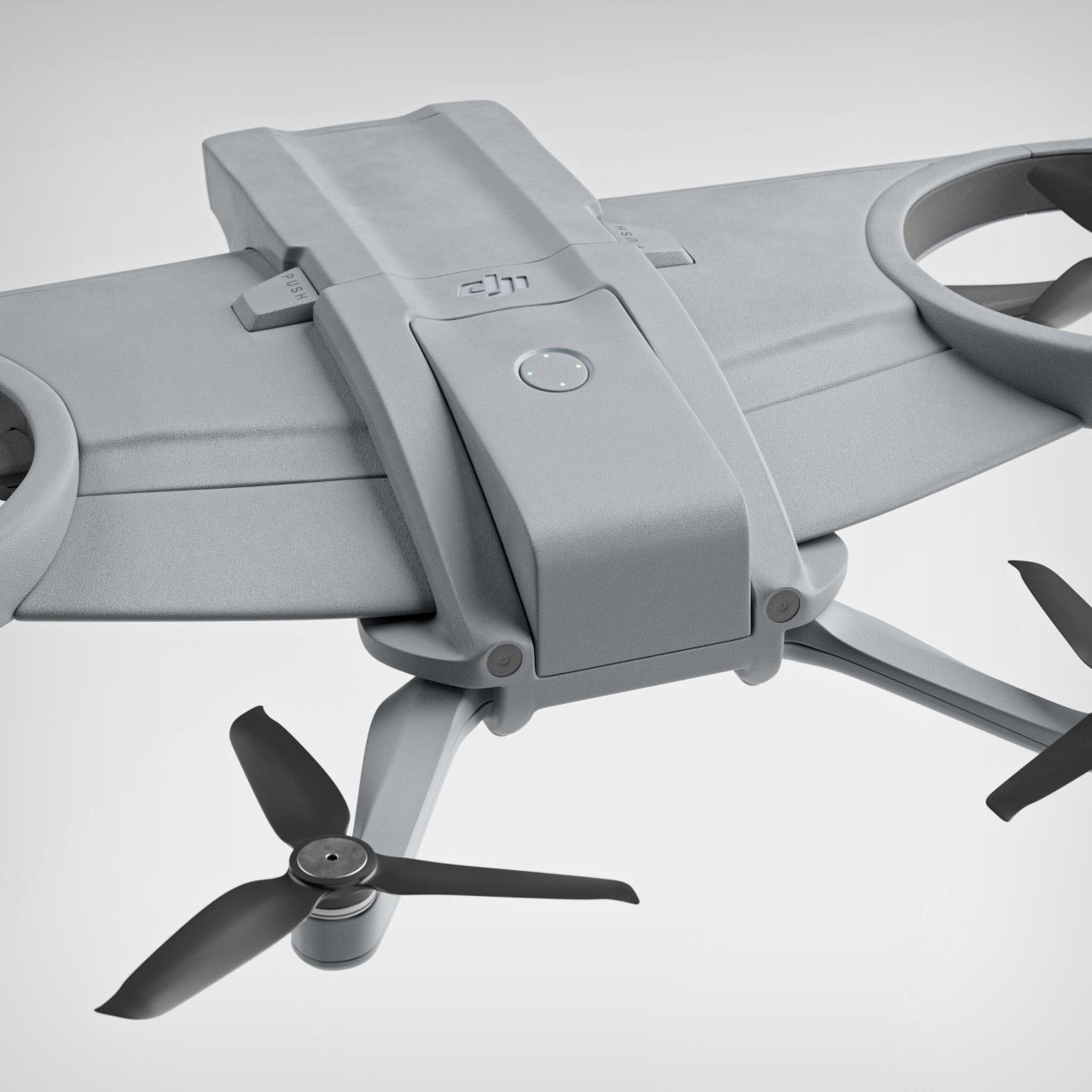

The battery sits on top, plugging right into the drone’s back to power it in flight. Given the conceptual nature of the drone, battery specs are purely conjecture, but I suppose having wings helps conserve the drone’s battery by giving the aerial vehicle the lift it needs while flying. The wings also present a trade-off in terms of maneuverability, hindering complex movements like moving in reverse or tight turns.
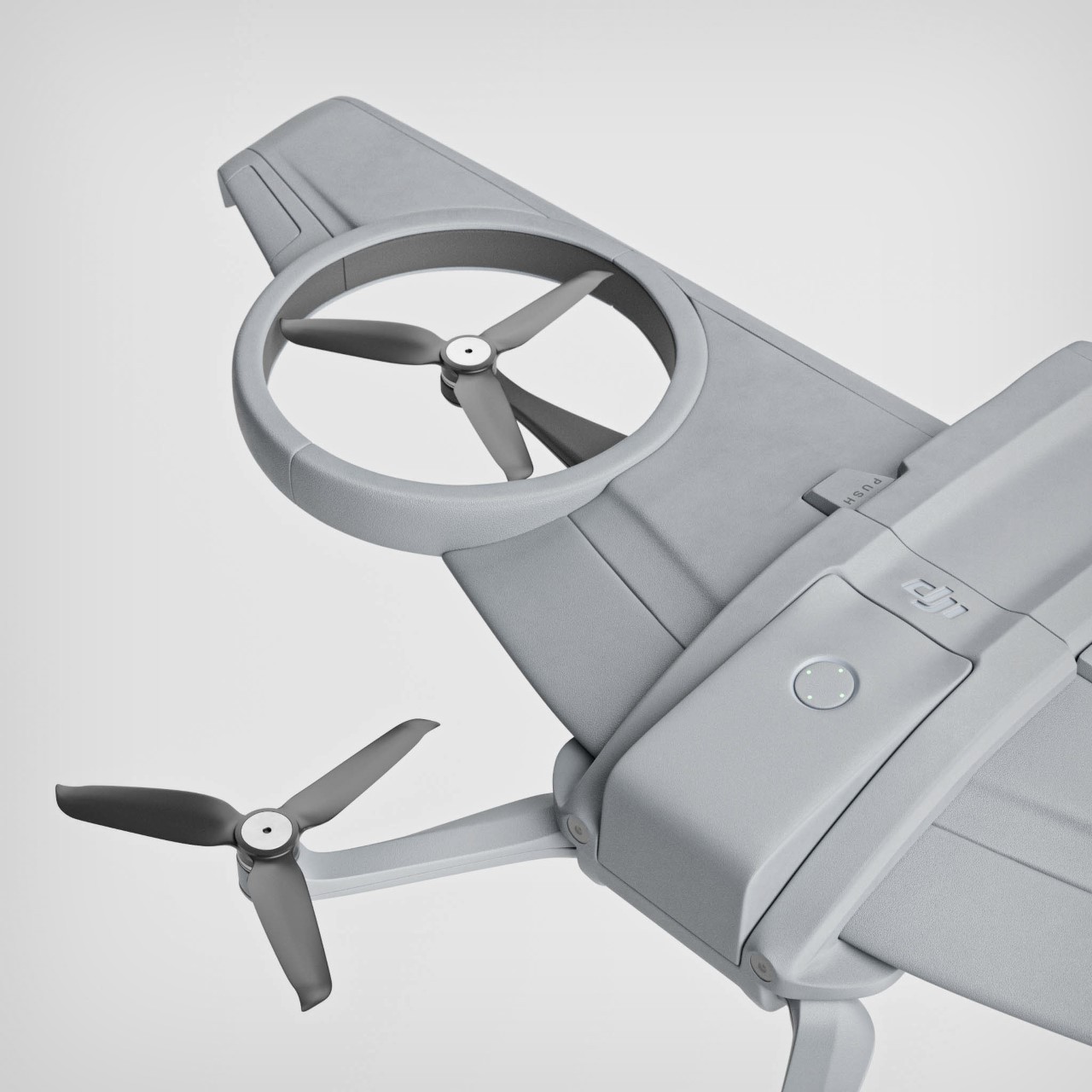

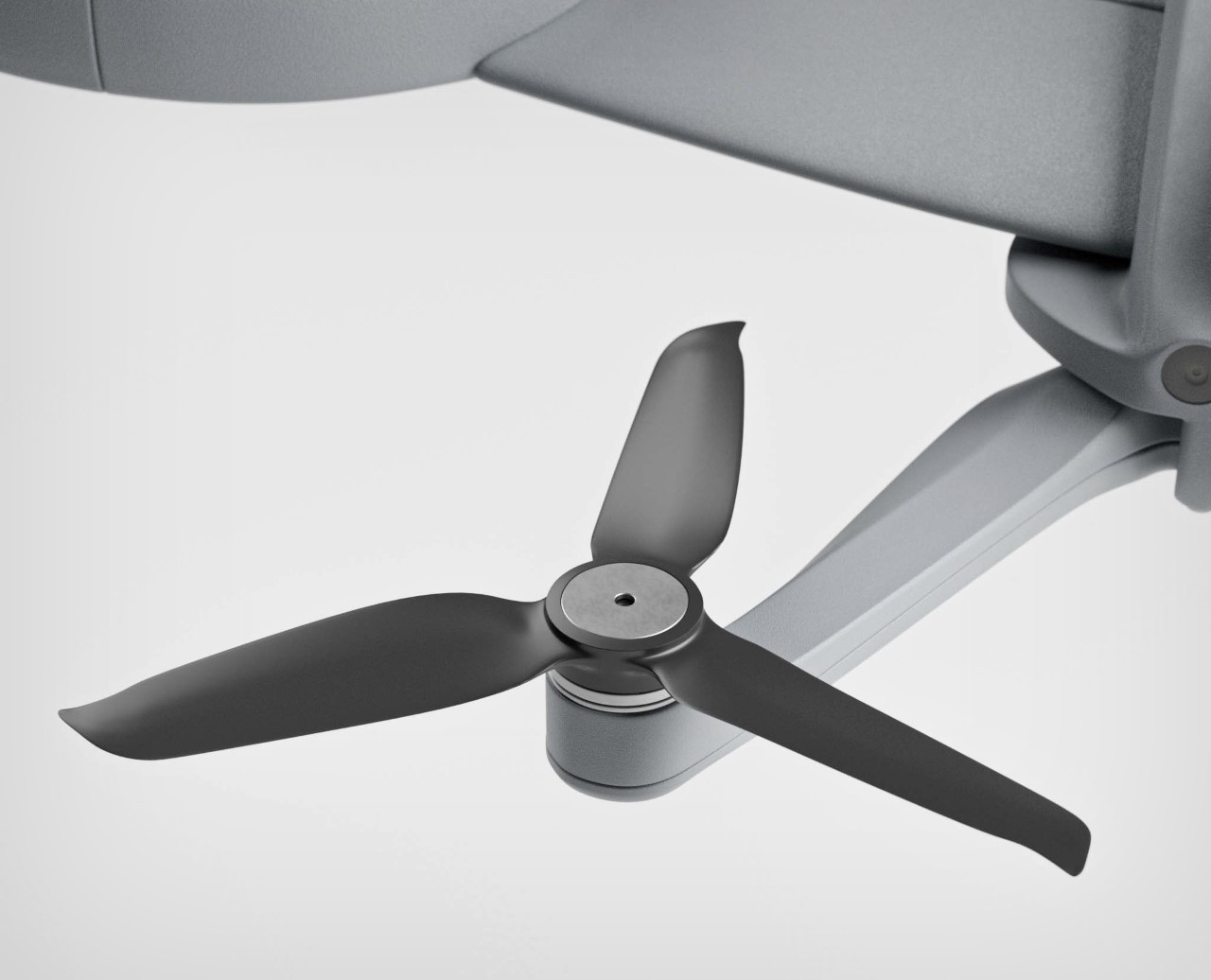

The propellers at the rear justifiably come without any bumper guards, given that they’re effectively shielded by the wings ahead of them. There is, however, a small technical challenge, and it has to do with the drone’s overall size. Having a drone with a wingspan means the DJI Glide isn’t a very compact little device. It therefore comes with detachable wings, which may prove to be a challenge during fast flight. Losing a wing to a loose clamp effectively cripples your drone, since it means losing a propeller too. Collisions may protect the propeller from damage, but the part where the wing and drone join together will take all the impact – something that highly affects your drone’s overall lifespan.
That said, the foldable format does make the DJI Glide fairly portable, allowing it to be flat-packed for shipping. The durability trade-off for efficient flight feels fairly valid – if the obstacle-avoidance algorithms are strong, there really shouldn’t be a problem. Plus, the drone doesn’t need a runway to take off or land, which definitely helps it in the long run for people flying recreationally.
